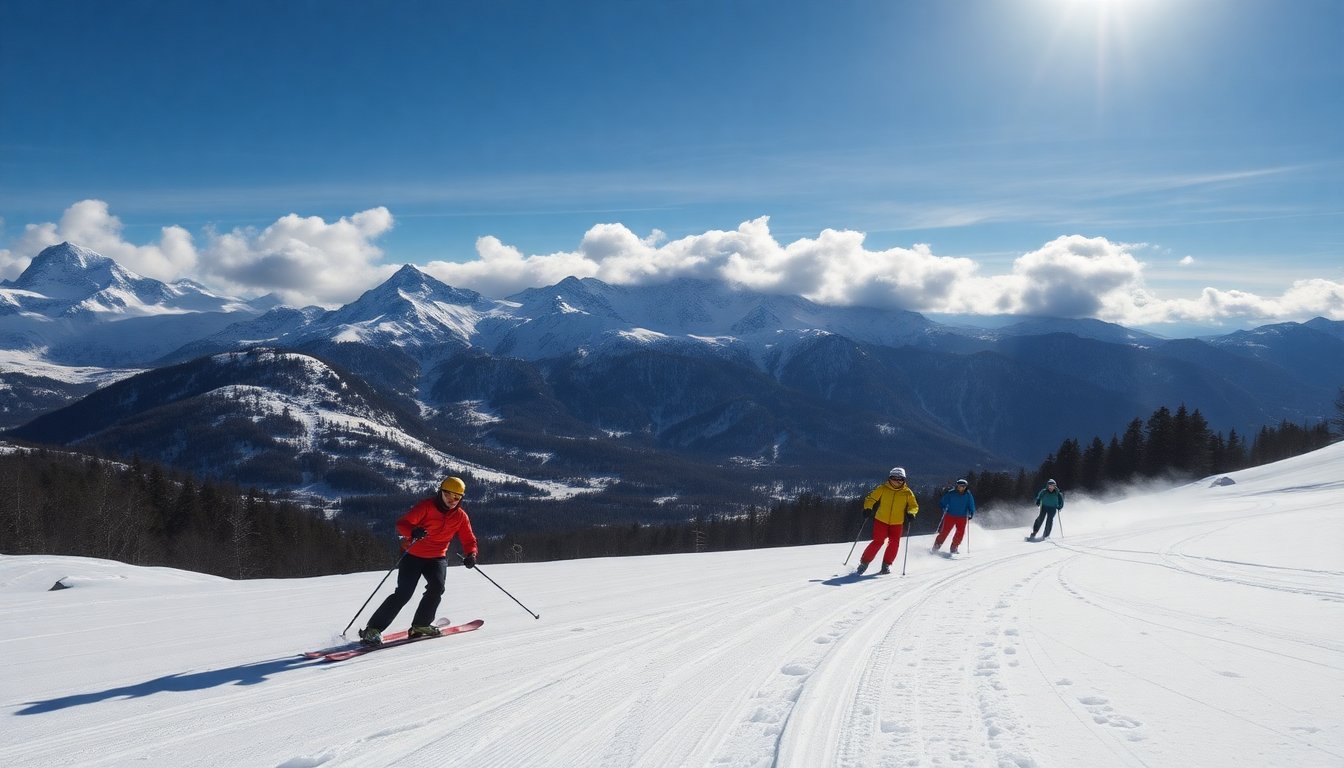Table of Contents
As the world continues to grapple with the consequences of climate change, winter sports are facing unprecedented challenges. Athletes like Marion Thénault, a talented freestyle skier, have witnessed both the beauty of snowy landscapes and the stark realities of climate change firsthand. This duality not only influences their sport but also ignites a passion for advocacy.
In her seven years of experience on the slopes, Thénault has experienced a wide range of winter conditions. The thrill of performing intricate aerial tricks relies heavily on the availability of quality snow. However, the increasing frequency of warmer winters has led to bare patches of grass on once-blanketed mountains, creating a surreal and unsettling environment for competitors.
Climate change’s direct impact on performance
The effects of climate change extend beyond mere aesthetics; they directly influence the performance of winter athletes. Thénault recalls World Cup events where artificial snow was the only white visible on the slopes, surrounded by green grass. This sight left her feeling out of place, as if her sport was unwelcome in such a fabricated environment.
Moreover, the melting snow significantly alters the dynamics of aerial skiing. Thénault explains that the consistency of the snow affects crucial aspects of her jumps. The dry ice used to create jumps can become slippery under warmer conditions, leading to unpredictable speeds and increased risks of injury. As she launches into the air, minor adjustments are essential for maintaining control and ensuring a safe landing. The changing conditions make it vital for athletes to adapt quickly to the fluctuations in speed and terrain.
Future of winter sports venues
A study conducted by the International Olympic Committee in highlighted a worrying trend: the number of locations suitable for hosting the Winter Olympics is dwindling. By the 2050s, only half of the previous Olympic cities may remain viable due to climate change. This alarming statistic underscores the existential threat that climate change poses to winter sports, as athletes and organizers alike face a future where traditional venues may no longer exist.
For athletes like Thénault, the stakes are high. Their passion for their sport is intertwined with a deep commitment to environmental stewardship. After competing in the Beijing Olympics and witnessing the disheartening contrast between vibrant green mountains and artificial snow, Thénault became an advocate for climate action. She believes that athletes have a responsibility to raise awareness about the changes occurring in the mountains they cherish.
Taking action for the environment
Thénault has set an ambitious goal to achieve a carbon-neutral journey to the upcoming February Olympics. Collaborating with an engineering firm, she is working to quantify her carbon footprint as an athlete. This initiative reflects a growing movement among athletes to address climate change proactively.
In a united effort, Thénault and 76 other Canadian athletes joined forces with the climate advocacy group Protect Our Winters. They penned a letter to Prime Minister Mark Carney, urging immediate action to combat climate change. The message from these athletes is clear: as Canada grapples with pressing issues like affordability and healthcare, climate change must remain a top priority.
The role of the International Olympic Committee
The International Olympic Committee (IOC) has recognized the urgency of this issue, pledging to cut its direct and indirect emissions by 50% by 2030, aligning with the Paris Agreement. In an effort to promote sustainability, the IOC is encouraging organizers to utilize existing venues or construct temporary facilities, as seen in the Summer Games in Paris, where an impressive 95% of venues were pre-existing or temporary.
However, skepticism remains among athletes regarding whether the IOC is doing enough to address climate change. Johan Eliasch, a candidate for IOC president, has made sustainability a central theme of his platform. He has proposed rotating the Winter Olympics between a select number of permanent venues to enhance environmental responsibility.
The urgent need for climate prioritization
As the world prepares for the upcoming COP30 climate conference, the voices of athletes like Thénault must be heard. They highlight the pressing need for political leaders to prioritize climate action, as the impacts of climate change are felt acutely by those who depend on the natural environment for their livelihoods and passions.
In her view, discussions around climate action often take a backseat to other political concerns. Thénault emphasizes the importance of addressing environmental issues even in challenging times, arguing that climate action should not be a secondary consideration.
In conclusion, the future of winter sports is intricately linked to the health of our planet. As athletes face the realities of diminishing snow and changing climates, their advocacy for climate action becomes more crucial than ever. The call for action is not just about preserving sports; it’s about safeguarding the natural beauty and ecosystems that define winter sports and the experiences they provide.


